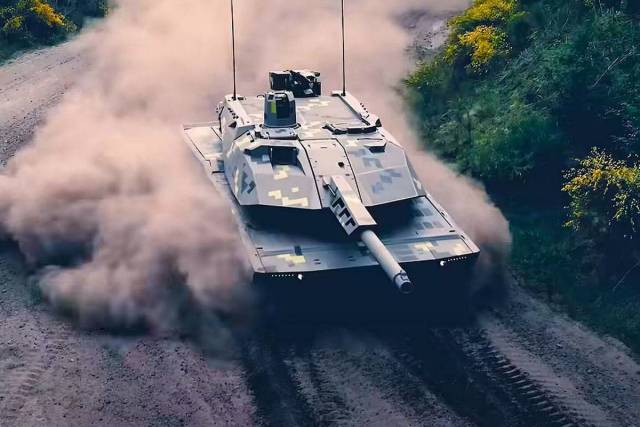We continue to publish additional materials about the new main battle tank (MBT) of the Rheinmetall concern "Panther" KF51, published during the profile forum in Berlin. We remind you that the first article of the series was an introduction to the topic, the second is devoted to the firepower of the model. In this article, the Managing Director of Rheinmetall Active Protection GmbH Stefan Haase explains the principles of building a tank survivability system.
"Panther" KF51: increased survivability while reducing the weight of the machine
The main battle tanks are by far the most protected vehicles on the battlefield, however, at least until now, increasing the level of protection has meant increasing the weight of the vehicle. Comparison of "Leopard 2A4" and "Leopard 2A7V" shows that according to the NATO classification, the former is an MLC60 vehicle and can overcome bridges of military class 60, while the latter belongs to the MLC80 category. Both have an armor package based on passive protection.
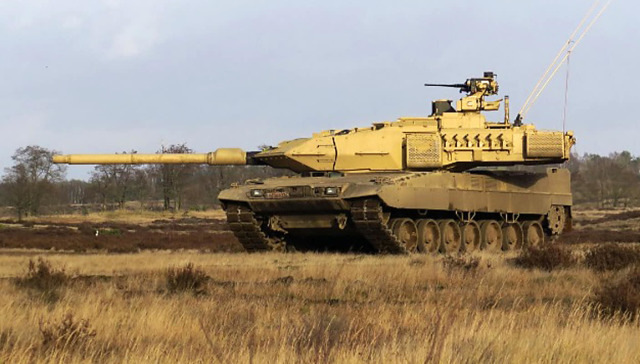
OBT "Leopard 2A7V"A pie chart provided by Rheinmetall in Berlin showed the average percentage of the mass of the main elements of the MBT: chassis 23%, gun and ammunition 10%, sighting system and fire control system 5%, power plant and fuel tanks 13%.
The body and protection make up the remaining 49% of the weight.
As explained by Sh . Haase's goal was to increase the level of protection when the Panther's mass returned to the 50-ton mark. To do this, they adopted the concept of hybrid protection, which is a combination of passive, reactive and active elements.
For many years, Western armies have faced asymmetric scenarios in which the main threats were RPGs and, rarely, anti-tank guided missiles (ATGMs). Peer-to-peer scenarios return to tank versus tank confrontation, so the main threat comes from kinetic KE projectiles, such as the Russian BM–42 [feathered armor-piercing sub-caliber projectile, NATO abbreviation - APFSD]. "We have already shown that we are able to destroy such a KE penetrator with the help of our active protection system," Sh.Haase, emphasizing how much it allows to reduce the number of other types of armor, thereby reducing the total weight of the tank protection kit.
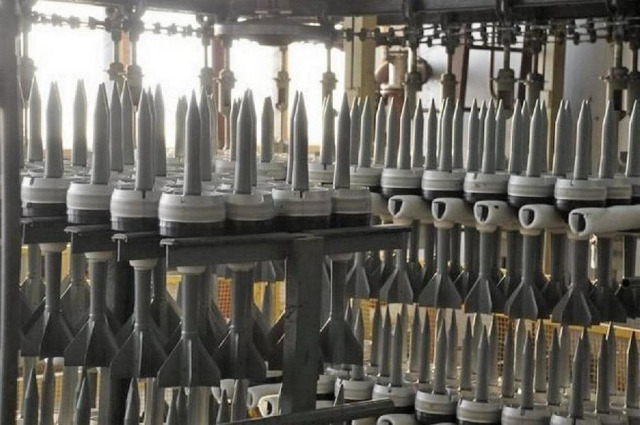
BM-42 Core Production Conveyor in IndiaIt is claimed that in order to cope with these high-speed penetrators, the reaction time of the system is much less than 1 millisecond (the word microseconds was mentioned in the report).
This means that the active component must be a development of the original Active protection system (ADS), previously developed by IBD Deisenroth, which was subsequently acquired by Rheinmetall, turning it into the aforementioned Rheinmetall Active Protection GmbH.
Since ADS was originally designed to counter slower flying projectiles, such as RPGs and ATGMs, in order to cope with the threat of tank shells, the reaction time of the sensors was also certainly shortened. At that time, the effector (active element) was defined as an "energy blade", which was created by tiles installed along the chassis of a combat vehicle. Rheinmetall developed this concept and presented a hybrid modular solution including sensors and effectors at IDEX 2019. To what extent the current solution is derived from this is unknown. According to the company's representatives, two different types of effectors are currently available: one for ATGM and RPG destruction, which requires less energy to neutralize, and the other, generating much more energy, is designed to inhibit KE penetrators.
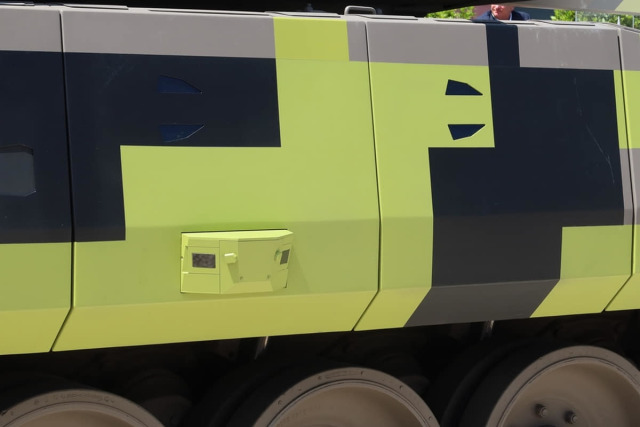
Modular armor OBT "Panther" KF51In his report, Sh .
Haase did not use the word "neutralization", referring to KE shells, but spoke of a "significant decrease in performance" of the incoming core. To hit a penetrating rod, usually tungsten, at some distance from the tank, the energy blade is activated when the penetrator is at a distance of 10-15 m to hit it at a "short distance", given its very high speed. It splits into parts, probably from 2 to 4, each of which hits the MBT with still considerable energy, but already at an angle far from optimal. Protection against multiple hits is provided by tiles covering all sectors. The sensors "understand" the type of flying projectile, mainly due to the huge difference in speed, and activate the corresponding tile.
In terms of potential collateral damage, the higher energy generated by the "KE tile" should not be a serious problem, since a direct collision between tanks rarely occurs in the presence of civilians, while the lower energy of the "ATGM tile" should inherently reduce the side risk. According to the speaker, Rheinmetall has improved the characteristics of its active protection system over the past few years.
Sh.Haase explained that the fight against the chemical energy threat, which in other terms means shaped charges, with the help of active systems allows you to concentrate work on passive armor mainly to eliminate the threat of KE, or at least the residual threat of KE left after the sub-caliber projectile was exposed to the active protection system.
Rheinmetall is considering the possibility of integrating grenade launcher-type active protection systems, such as Trophy, "which have a high potential in repelling attacks from above." And this connects us with the emerging threat that has shown its effectiveness on the battlefield, whether it is ATGM or RPG. The integration of the launcher is planned to be considered in the next iteration of the Panther project.
Rheinmetall, referring to a possible system of protection against threats emanating from the third dimension, uses the abbreviation TAPS, which means a system of protection against attacks from above (Top Attack Protection System). A division of the concern from Dusseldorf did not provide many details, stating that the core of the system has been developed so far, while the effectors have not yet been determined, since it can be a laser beam, a rapid-firing small-caliber machine gun or others, as discussed in the part on lethality .
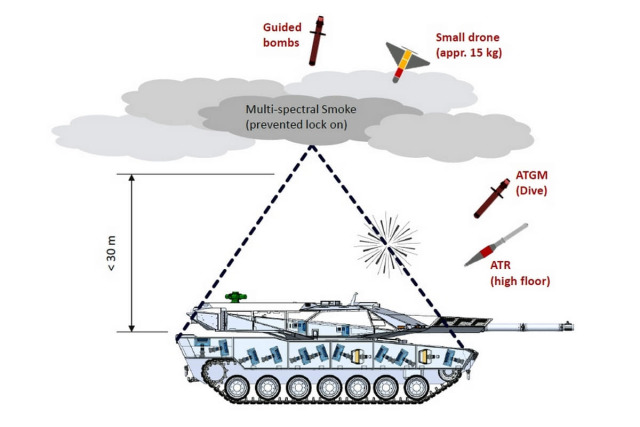
Promising multispectral smoke screen systemThe multi-sensor multi-effect modular multilevel TAPS system can include a grenade launcher-type system, as well as a multispectral smoke screen system that will create a cloud over the tank, avoiding projectiles hitting the target, one example is the Rheinmetall MASS system.
This will require sensors with a longer range, about 500-600 m, compared to those used in active systems, since it takes time for smoke to form. Such systems would make it possible to switch to the automatic deployment of a smoke cloud providing thermal and optical masking.
Reactive armor is also integrated into the survivability package. It includes the same sensors and the same initiation systems that are used for active countermeasures, which, according to Sh.Haase, provide the same level of security. This means the transition from reactive armor packages triggered by impact to reactive armor packages triggered by sensors covering the crew compartment, including protection from an attack from above.
All this leads to a lower weight of the kit compared to passive armor. According to Dr. Sh .According to Haase, Rheinmetall conducted a series of tests against several sets of evolutionary armor, firing at 30×30 cm plates, and they showed a good correlation between simulation and real tests. This made it possible to test the reduction in the thickness of the base armor, mainly based on steel, against the effects of overpressure, which is key to overcoming the "Panther KF51" weight limit of 50 tons.
According to the materials of the resource edrmagazine.eu
